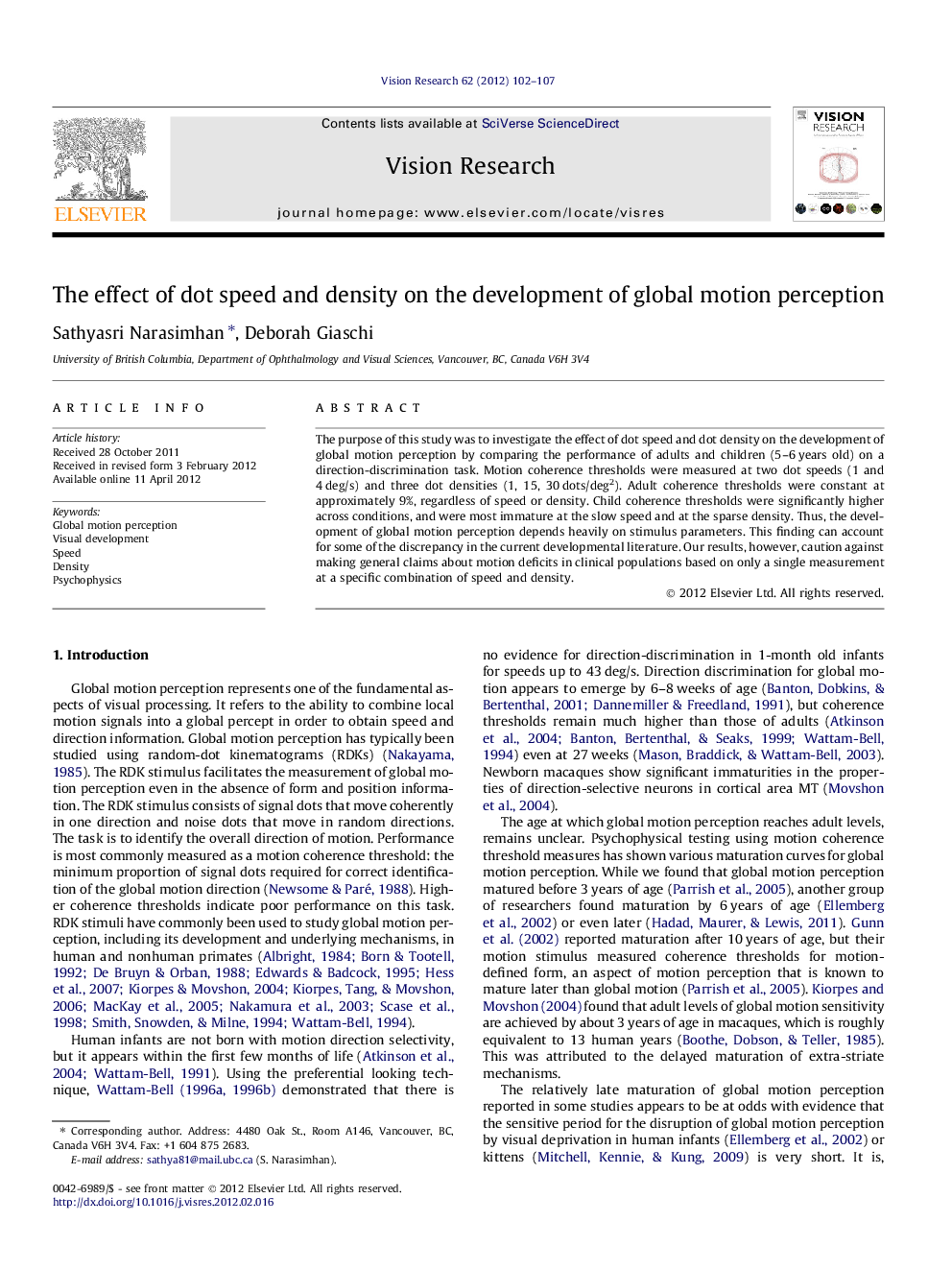| Article ID | Journal | Published Year | Pages | File Type |
|---|---|---|---|---|
| 6203688 | Vision Research | 2012 | 6 Pages |
The purpose of this study was to investigate the effect of dot speed and dot density on the development of global motion perception by comparing the performance of adults and children (5-6Â years old) on a direction-discrimination task. Motion coherence thresholds were measured at two dot speeds (1 and 4Â deg/s) and three dot densities (1, 15, 30Â dots/deg2). Adult coherence thresholds were constant at approximately 9%, regardless of speed or density. Child coherence thresholds were significantly higher across conditions, and were most immature at the slow speed and at the sparse density. Thus, the development of global motion perception depends heavily on stimulus parameters. This finding can account for some of the discrepancy in the current developmental literature. Our results, however, caution against making general claims about motion deficits in clinical populations based on only a single measurement at a specific combination of speed and density.
⺠Dot speed and density significantly affect child motion coherence thresholds. ⺠Dot speed and density have no significant effect on adult global motion thresholds. ⺠At age 6, global motion is less mature for slow speeds as well as sparse densities. ⺠Global motion perception develops sooner for fast than for slow speeds. ⺠Stimulus parameters should be considered before characterizing global motion deficits in clinical populations.
